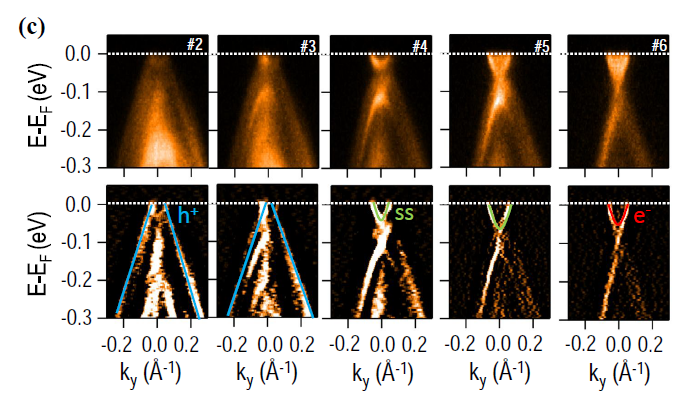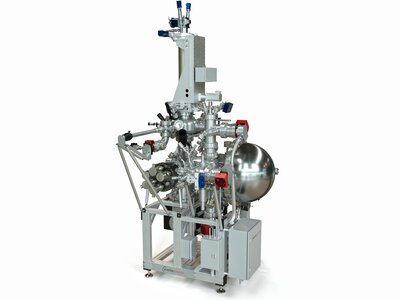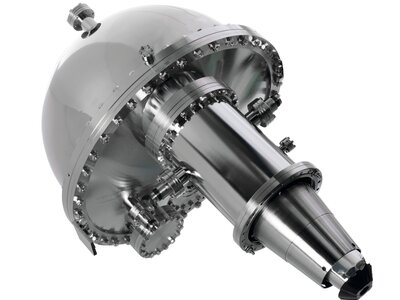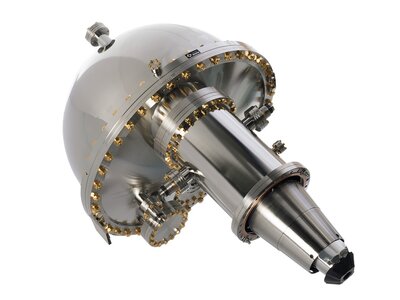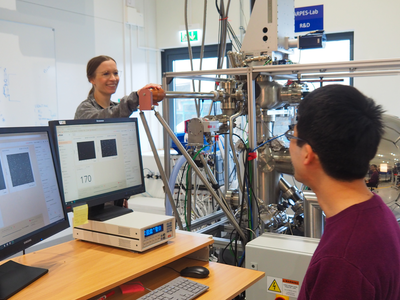High Resolution Angle Resolved Photoelectron Spectroscopy (HR-ARPES)
Angle resolved photoelectron spectroscopy (ARPES) is the overarching name of several photoelectron spectroscopies where the electron’s energies and emission angles relative to the sample surface are measured. With these quantities, it is possible to get information about the electronic band structure of the examined samples, because the emission angle bears a direct connection to the momenta of the electrons prior to photoexcitation. Modern, sophisticated ARPES setups are also equipped with spin detectors. ARPES experiments employ a variety of different photon energies and experimental boundary conditions (e.g. Laser-ARPES, µARPES or ARTOF), and are usually much more demanding on the experimental hardware than simple XPS or UPS measurements (e.g. quality of magnetic shielding, photon spot size of the sample, temperature stability etc.).
High resolution ARPES (HR-ARPES) is achieved with state-of-the-art setup, where the energy resolution is typically in the range 1 meV and the angular resolution ~ 0.1°. To achieve these specifications, a thoughtful combination of analyzer, chamber, manipulator and photon source is required.

